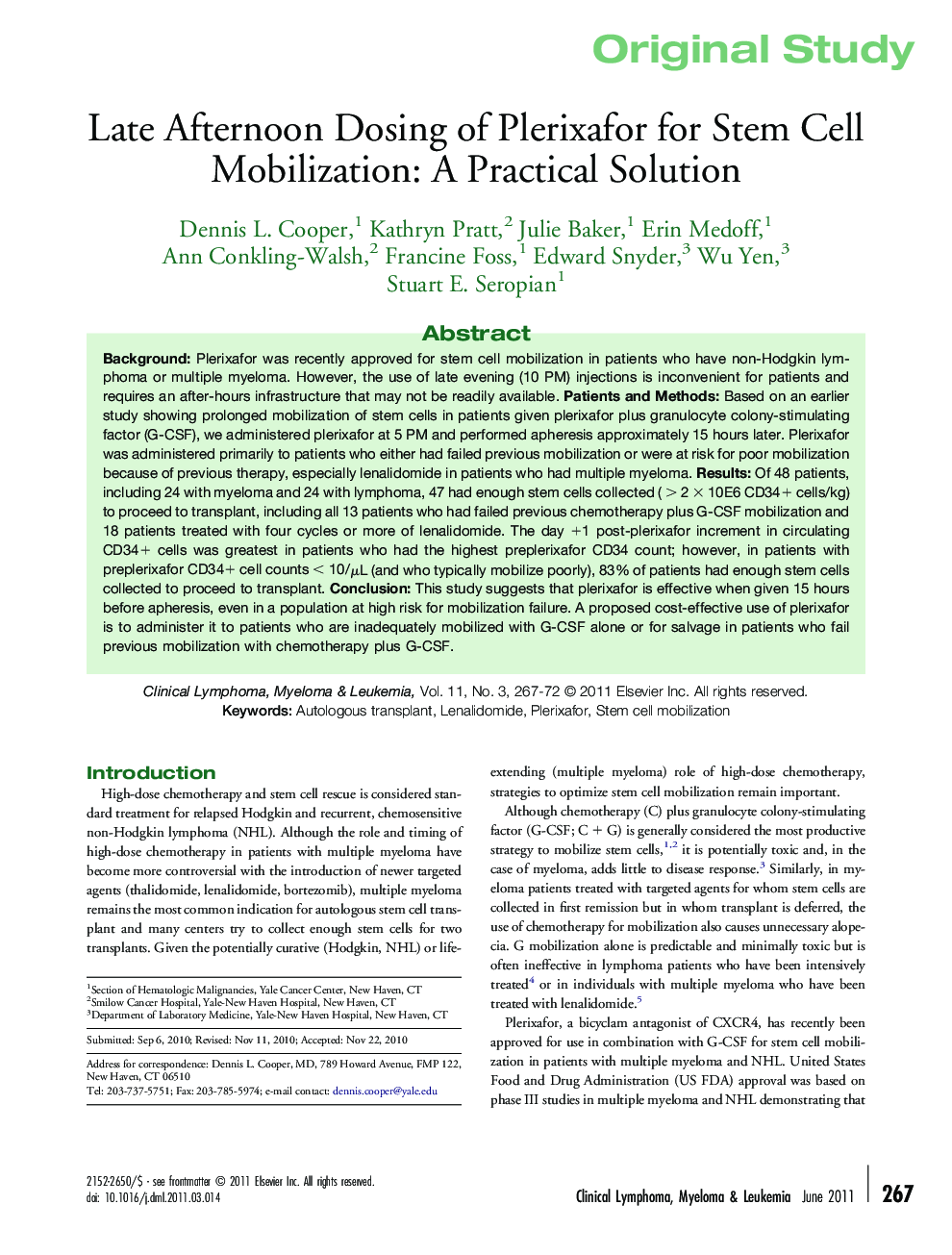| Article ID | Journal | Published Year | Pages | File Type |
|---|---|---|---|---|
| 2755269 | Clinical Lymphoma Myeloma and Leukemia | 2011 | 6 Pages |
BackgroundPlerixafor was recently approved for stem cell mobilization in patients who have non-Hodgkin lymphoma or multiple myeloma. However, the use of late evening (10 PM) injections is inconvenient for patients and requires an after-hours infrastructure that may not be readily available.Patients and MethodsBased on an earlier study showing prolonged mobilization of stem cells in patients given plerixafor plus granulocyte colony-stimulating factor (G-CSF), we administered plerixafor at 5 PM and performed apheresis approximately 15 hours later. Plerixafor was administered primarily to patients who either had failed previous mobilization or were at risk for poor mobilization because of previous therapy, especially lenalidomide in patients who had multiple myeloma.ResultsOf 48 patients, including 24 with myeloma and 24 with lymphoma, 47 had enough stem cells collected (> 2 × 10E6 CD34+ cells/kg) to proceed to transplant, including all 13 patients who had failed previous chemotherapy plus G-CSF mobilization and 18 patients treated with four cycles or more of lenalidomide. The day +1 post-plerixafor increment in circulating CD34+ cells was greatest in patients who had the highest preplerixafor CD34 count; however, in patients with preplerixafor CD34+ cell counts < 10/μL (and who typically mobilize poorly), 83% of patients had enough stem cells collected to proceed to transplant.ConclusionThis study suggests that plerixafor is effective when given 15 hours before apheresis, even in a population at high risk for mobilization failure. A proposed cost-effective use of plerixafor is to administer it to patients who are inadequately mobilized with G-CSF alone or for salvage in patients who fail previous mobilization with chemotherapy plus G-CSF.
